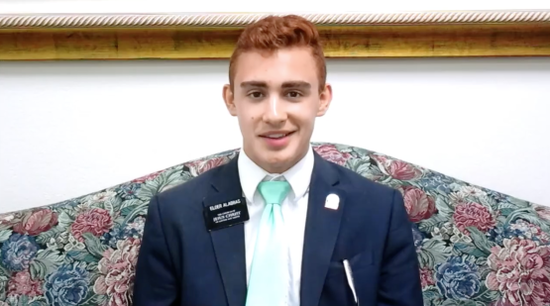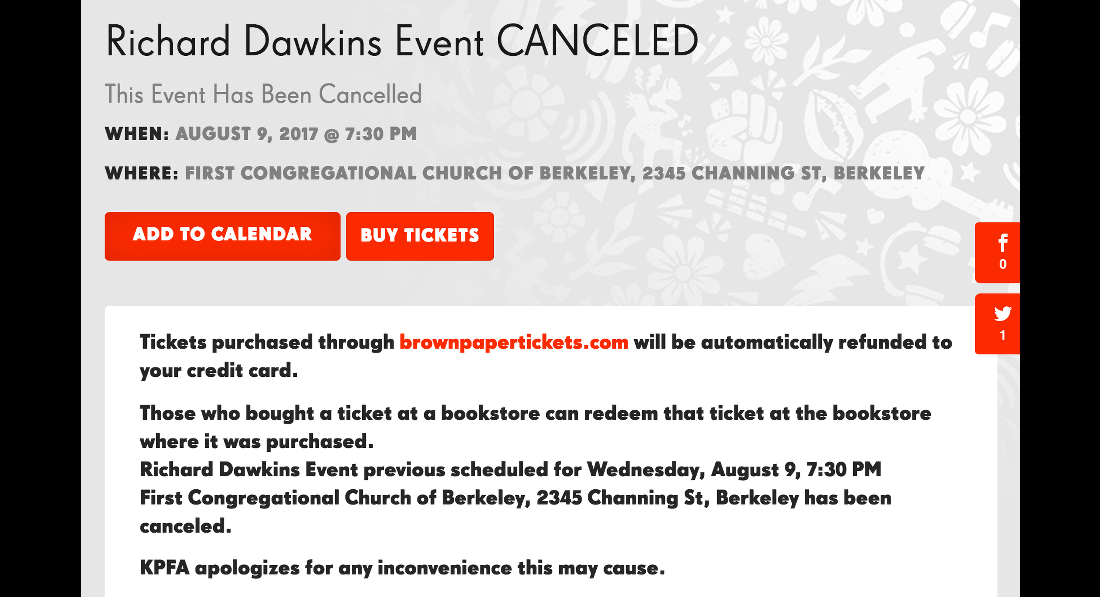Yesterday, I posted about a really disturbing story that appeared on a Mormon website. It was about Kaydin Alabbas, a young man about to embark on his two year mission trip… except he didn’t really want to go. So the day before he left for the Mormon Training Center, he admitted his doubts to his parents during a family trip to Utah’s Bryce Canyon.
His parents responded by abandoning him there and driving off.

Kaydin got through that situation only because the owners of a gas station offered him a phone and place to stay for the night and because his grandparents were able to pick him up the next morning.
And yet that story — that awful, awful story about how these Mormon parents treated their doubting son — was intended to be inspirational.
The author, Jason F. Wright, didn’t seem to find anything wrong with how Kaydin’s parents just left him in the park. He focused instead on what the grandfather said to Kaydin when he picked him up: Just give the Training Center a shot. That did the trick, and Kaydin is now a year into his mission, and he’s a devout Mormon, and isn’t that wonderful?!
No. It’s not wonderful, because the story still suggests there was nothing wrong with abandoning a child in a national park in order to teach him a lesson.
The criticism of Kaydin’s parents was deserved.
The criticism aimed at Jason F. Wright for the way he conveyed the story was deserved.
But what about the criticism for LDS Living, the website that initially published the story? What were they thinking?! To be sure, they deleted that story from their website and later put up a much more sanitized (some would say “whitewashed”) version of it. But the Google cache was still there so we know they allowed it to go up.
After a lot of backlash, one of the editors of the site, Danielle B. Wagner, has posted a lengthy explanation of what happened behind the scenes.
In short, she says, the story was never supposed to go up on the website at all because the staff felt the same way the critics did.
I set up a story space for this piece, but after reading through the story to edit it, I immediately felt anything but inspired…
Usually, we keep stories that aren’t ready to share on our site in draft mode, so we can keep looking over them and editing them before they are published. This is one of those stories that should have been kept hidden, but I made the mistake of clicking undraft before I hit save.
Luckily, within minutes one of my coworkers noticed the story live on our site, and she brought up her concerns [and the story was taken down]…
…
We talked for hours and decided we could not share this version of the story. We did not want to promote anything that would suggest any response besides loving and supporting your family and friends, especially in vulnerable places in their lives.
To paraphrase that, they put the submitted story in draft mode, realized the central problem with it, and tried to figure out if there was anything in there worth salvaging. But before they could settle on how to present it, or whether to present it at all, they accidentally published it. Just for a few minutes. But it was long enough for someone to save the page (or at least long enough for Google to notice). And the article that was never meant to go live on their site began circulating around the internet.
As someone who goes through multiple drafts for just about every post on this site — and even more drafts when the article is coming from another contributor or guest writer — I would be horrified if something I wrote in draft mode ended up on the site. I write a lot of things that I realize only after a second or third read-through I shouldn’t say or that I’m just plain wrong about. Sometimes, it’s just easier to get all your thoughts on the screen before editing everything.
So I absolutely believe this explanation.
But even if the initial post should never have gone up, why publish the sanitized version later on? That story glossed over Kaydin’s abandonment and just focused on what happened after the grandfather picked him up. Wasn’t that a bad decision, too?
Wagner writes:
I felt Elder Alabbas’s words could speak for themselves, and I wanted to highlight the truly remarkable part of this story, that his grandpa never left and never stopped loving.
Okay. We can debate that decision. But at least I can understand where she’s coming from. We all choose how to tell stories, and if I had only seen the “sanitized” version, I doubt it would’ve raised any red flags for me.
Instead, it’s the original disturbing version that made the rounds online.
Wagner concludes:
… I am terribly sorry to everyone who has been wrapped up in this whole big mess or who misunderstood where LDS Living stands on this topic. I made a mistake. I published a story that should have never been shared, and I acknowledge that. But, in a way, I am also glad to have this learning experience and glad to have readers who speak up when they might disagree with something we write. That’s the glorious thing about a Church made up of imperfect people; we can move toward becoming better and figuring out tricky situations together.
I know some people will see this as an apology that came out of necessity rather than a sincere understanding of the problem. I don’t see it that way at all. They didn’t have to write this explanation. It’s not like devout Mormons, the people who likely read their site and pay for it, were the ones raising hell about the story. Wagner wrote the apology because she was disturbed by the story before it even went up. I really believe that.
To their credit, LDS Living has not removed the sanitized grandfather-focused version of the story from their website. It would be wrong to do that since this story is already out there. Instead, they added a disclaimer at the top of the page directing people to the apology and explanation.
It reminds me of what the sports website Grantland did in 2014 after posting an article that was transphobic. They could’ve deleted it, hoping people would just forget about it. Instead, they kept it up, and added a disclaimer at the top directing people to a guest post detailing all the problems in the piece as well as a note from the editor explaining how the piece got through the editing process at all and what they were doing to prevent that from ever happening again.
People make mistakes. They don’t always have to be transparent about them. LDS Living is being transparent about what happened. They should be applauded for that — even if you believe that no version of this story should’ve been shared.
The person who really ought to be criticized here is Jason F. Wright, who wrote the initial story and, as far as I can tell, hasn’t said a damn word. He’s basically letting LDS Living take the heat for his own decisions.
I reached out to him yesterday for comment. I still haven’t heard back.




It’s Moving Day for the Friendly ..."
It’s Moving Day for the Friendly ..."
It’s Moving Day for the Friendly ..."
It’s Moving Day for the Friendly ..."